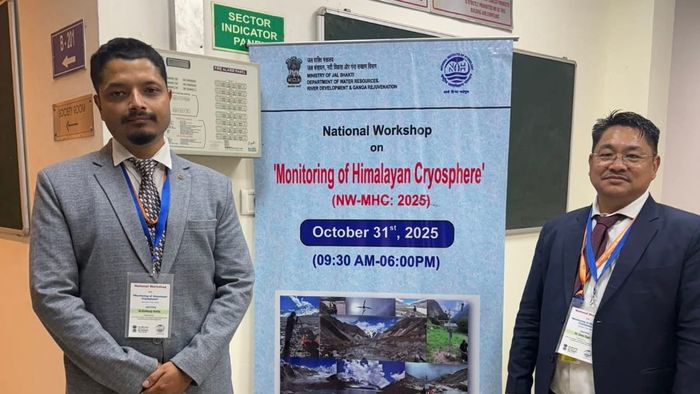Arunachal’s Earth Sciences director calls for stronger glacier research collaboration at national meet
Arunachal Pradesh's Earth Sciences director urges greater cooperation in glacier research to better understand environmental impacts. The call focuses on improved data sharing and increased funding for Himalayan glacier monitoring

- Nov 01, 2025,
- Updated Nov 01, 2025, 11:58 AM IST
A stronger collaborative framework for glacier and climate research across the Himalayas took shape this week as Tana Tage, Director of the Centre for Earth Sciences and Himalayan Studies (CESHS), Arunachal Pradesh, joined leading scientists at the National Workshop on “Monitoring of Himalayan Cryosphere,” organised by the National Institute of Hydrology (NIH), Roorkee.
The workshop, which brought together glaciologists and researchers from premier institutions including IIT Madras, IIT Roorkee, IIT Kanpur, IIT Ropar, Wadia Institute of Himalayan Geology, Birbal Sahani Institute of Palaeosciences, and the Space Applications Centre, focused on enhancing monitoring mechanisms for Himalayan glaciers and cryospheric systems.
During his presentation, Tage highlighted the critical gap in field-based cryosphere studies in Arunachal Pradesh—home to more than 2,000 lakes and four major glaciated basins. He underscored the region’s importance as a key headwater zone for the Brahmaputra basin and emphasised the need for sustained, evidence-driven monitoring of glacier and climate interactions.
Tage chaired a key brainstorming session that led to a consensus among participants to establish a joint working group for benchmarking selected glaciers and basins across the Indian Himalayas. The initiative aims to generate robust, instrument-based datasets to improve glacier modelling and coordinate research activities nationwide.
Representing Arunachal Pradesh, CESHS will contribute to ensuring that glacier and climate studies directly support water security, hazard management, and sustainable development goals. The move marks a pivotal step towards building a unified national approach to understanding and managing the Himalayan cryosphere.